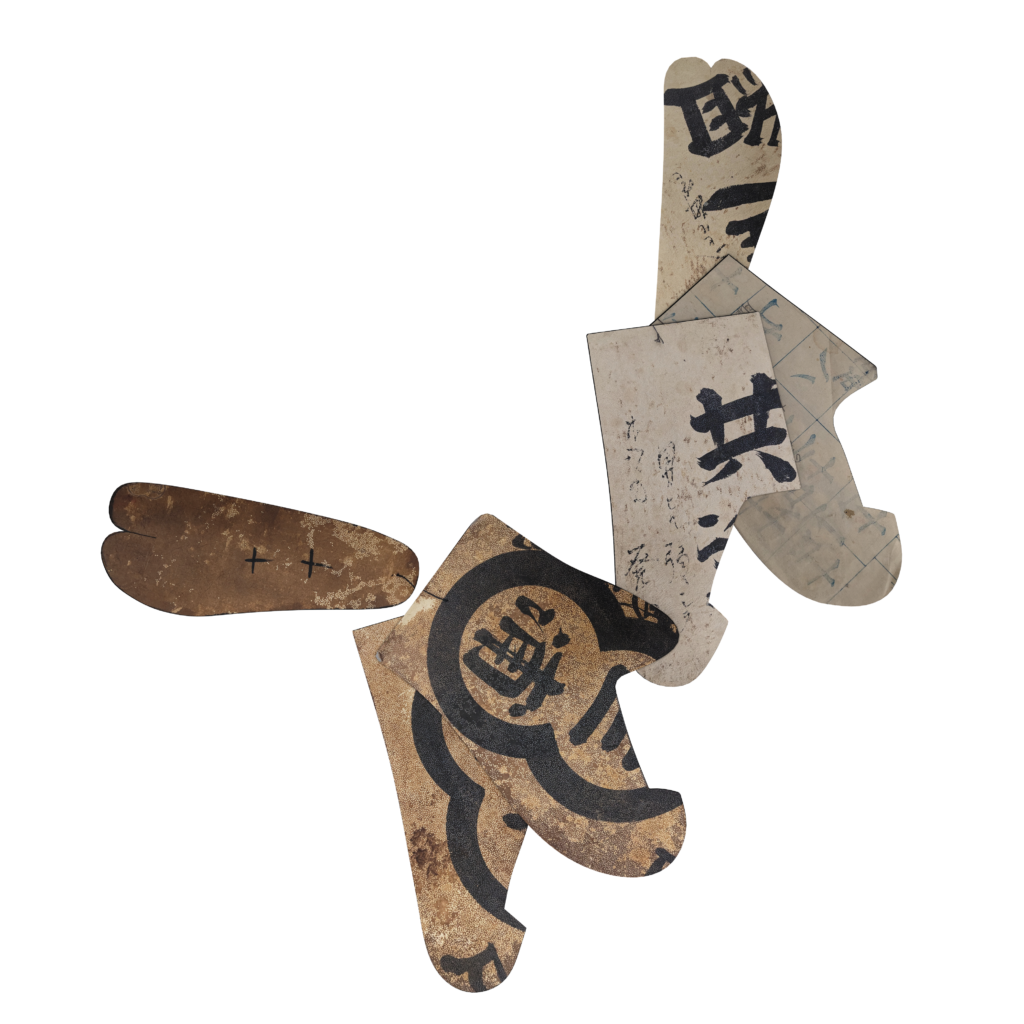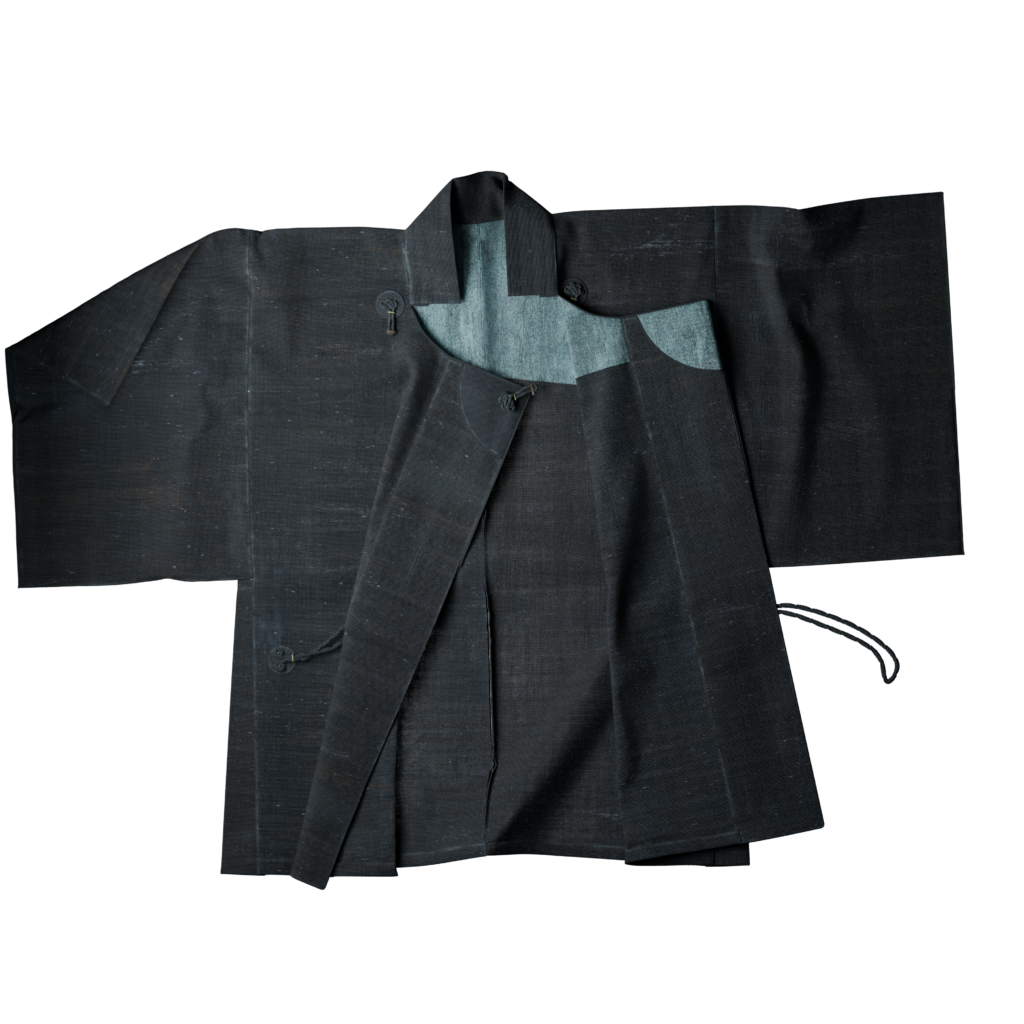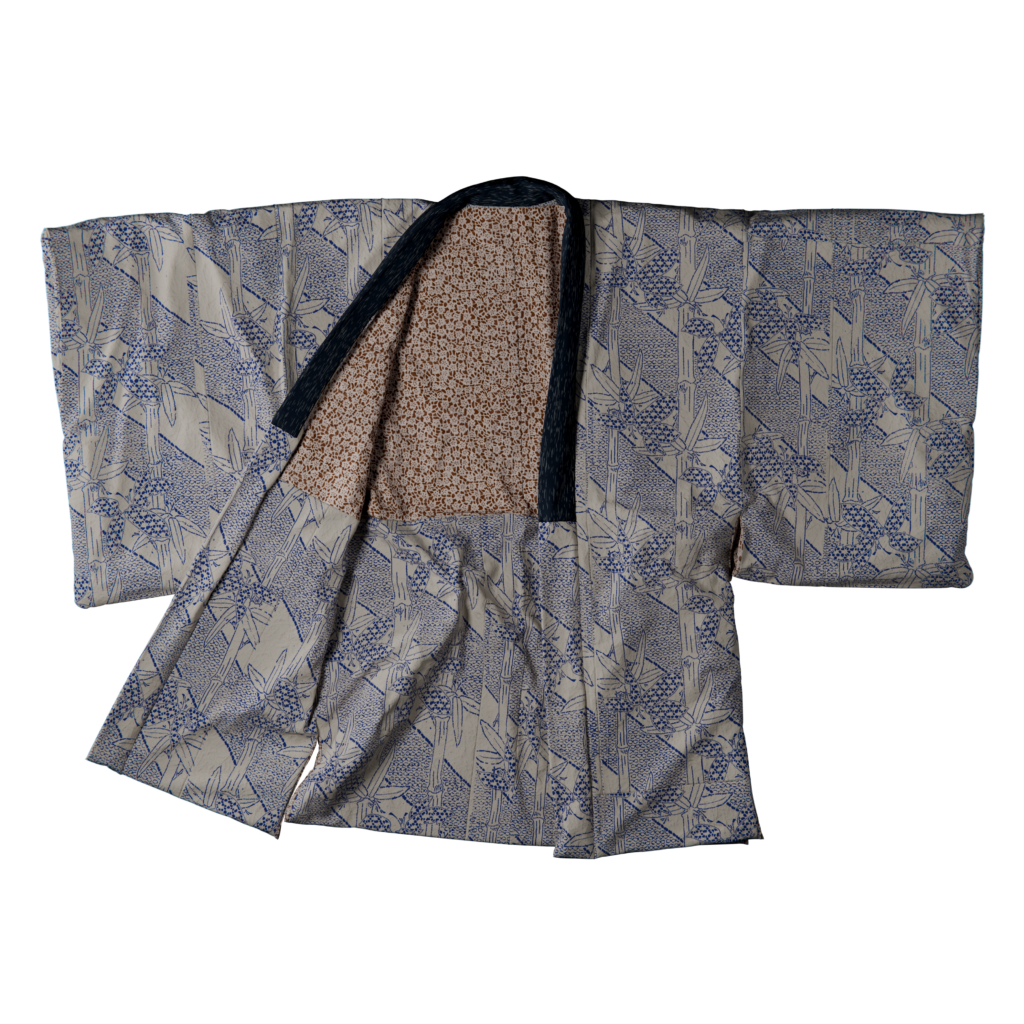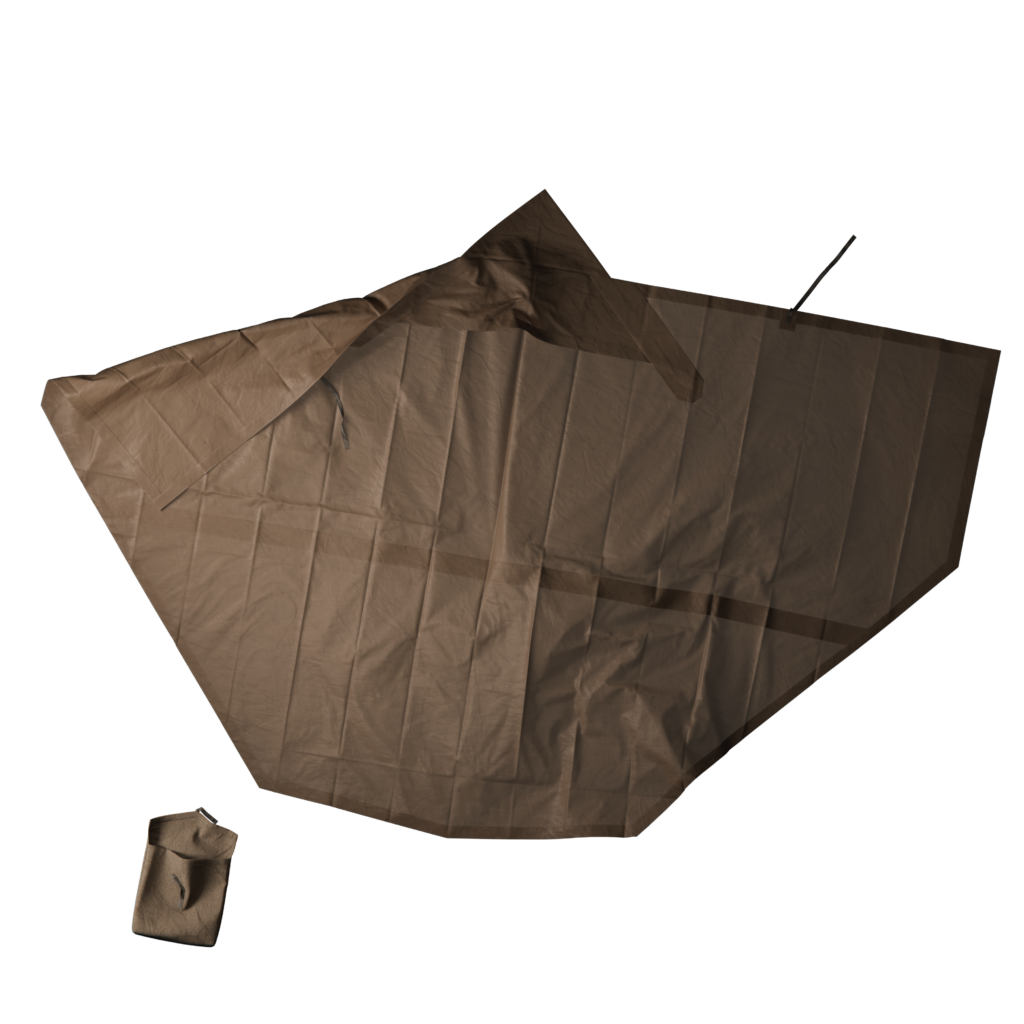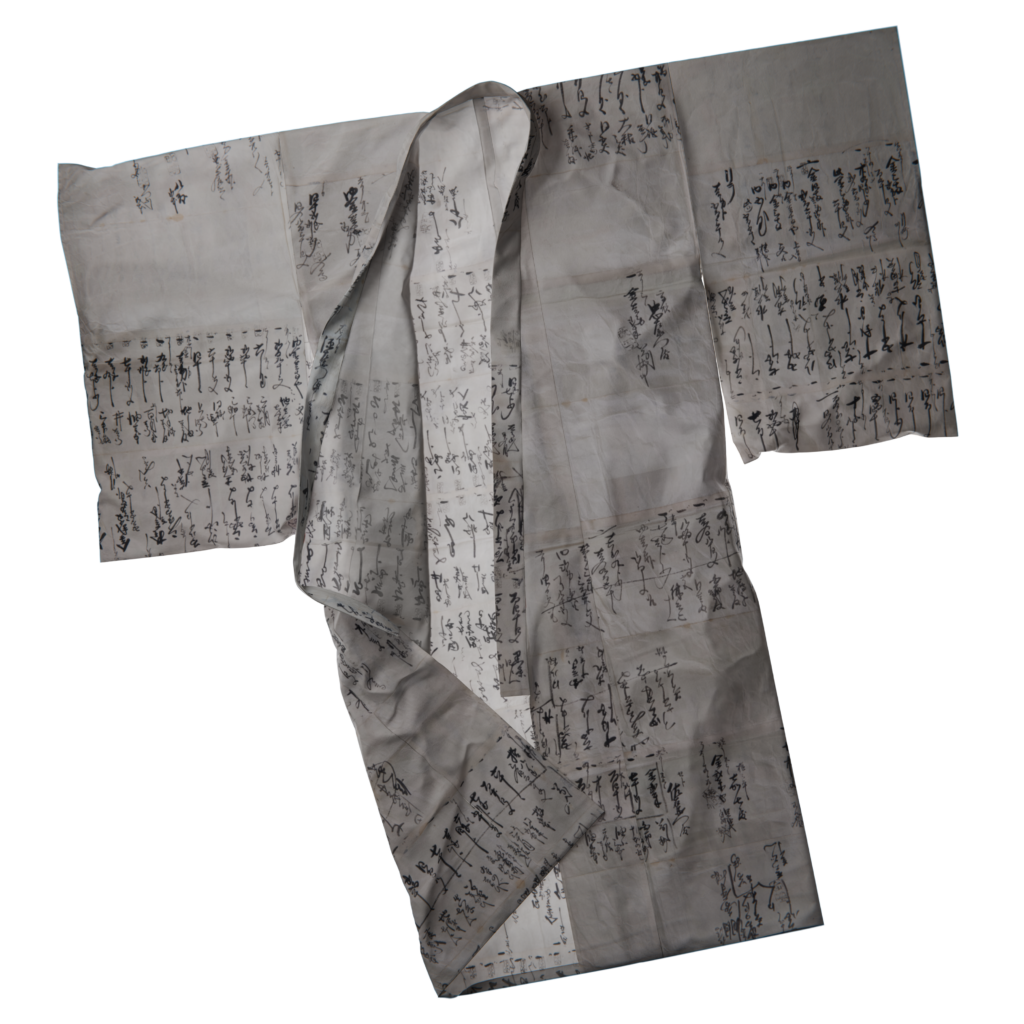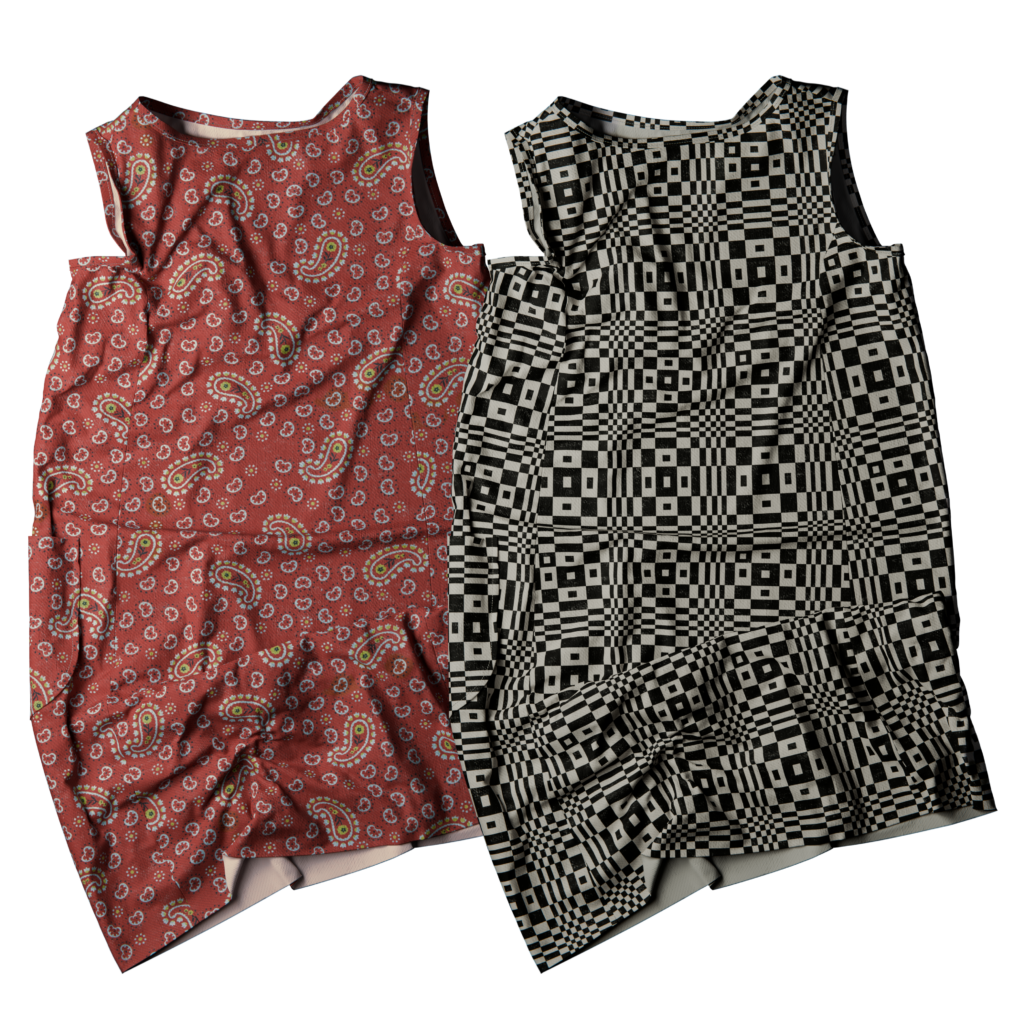The paper garments collection
February 02, 2025
Ponz and Daphne first worked together in April 2023 when Daphne contacted Ponz to digitise the pattern of her studio’s Paper baseball cap. This pretty simple technical task led to a visit to the DNJ Paper studio in Melbourne and a few conversations, in which Daphne enthusiastically introduced Ponz to the topic of paper garments, sparking her curiosity.
Dr. Daphne Mohajer va Pesaran is Iranian-Canadian, but spent ten years studying and working in Tokyo, where she became interested — almost obsessed — with washi (和紙), traditional Japanese paper hand-made with mulberry tree pulp.
She explained to us that at first, paper may not look like a suitable material for making clothing but, if made and treated in a certain way, it can become strong and durable enough to be used as a cloth.
Though the exact date is unknown, for many generations artisans in Japan have made a form of clothing called kamiko (紙衣 or 紙子) from sheets of washi (Japanese paper 和紙). These garments have been produced by wrinkling, softening, and strengthening paper sheets with starch and tannins, and then glued, stitched or folded together. During the Edo Period (1603-1868), the production of kamiko reached its peak and was made by craftspeople throughout Japan but today, only a few communities of aging craftspeople still hold the knowledge required to produce garments from sheets of handmade paper. The practice of making kamiko and wearing it is now rare.
She also added that paper has been used for clothing design across many generations and cultures. The use of paper for clothing was, historically, one determined by necessity. For many generations and perhaps even since its earliest uses, paper has been used for clothing in Japan, China, and Korea. And in resource-strapped inter- and post-war Germany, between 1930 to 1965, handbags and clothing were made from forms of paper. The same follows for Finland, where paper textiles were used to produce furniture and even baby strollers. Similarly, the antique paper garments found in the ATOPOS archive in Athens were likely produced out of paper due to the accessibility and low cost of paper at the time and lack of access to other fibres like cotton or hemp. Beyond pure necessity, contemporary fashion designers have used paper to connect with heritage, explore material limits, or even critique the disposable nature of clothing. In the 1960s, a short-lived fad for disposable paper garments became iconic of the throwaway mindset of the Space Age, and more recently, Japanese designer Issey Miyake’s team created three paper silhouettes for their Spring Summer 2025 collection.
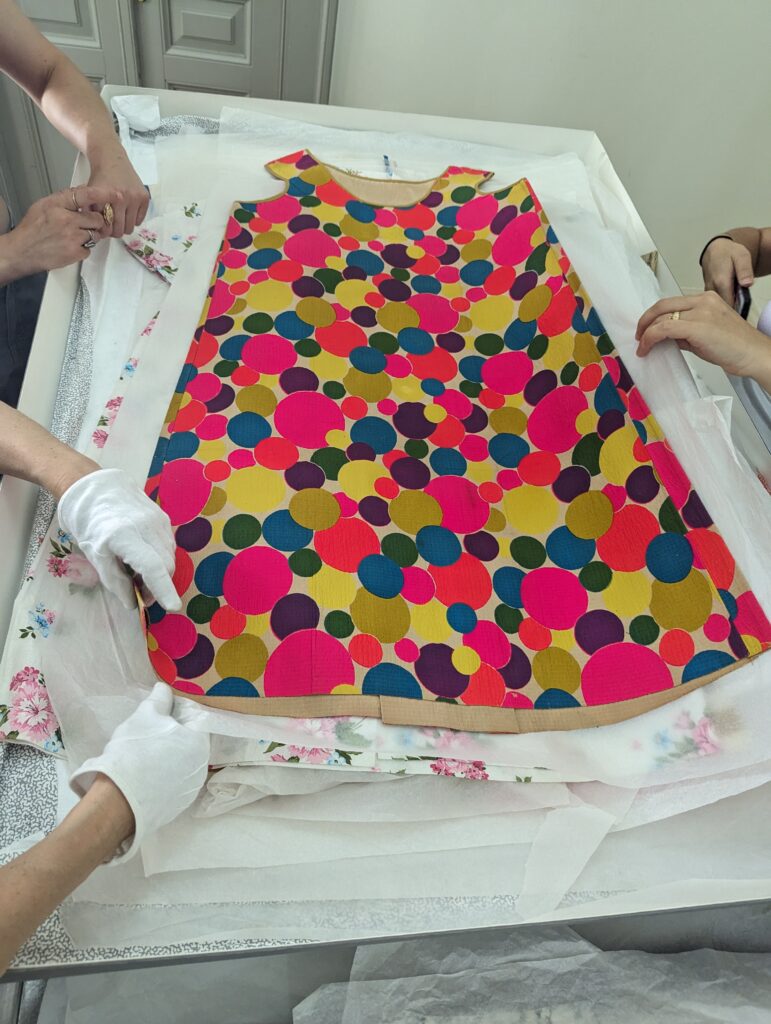
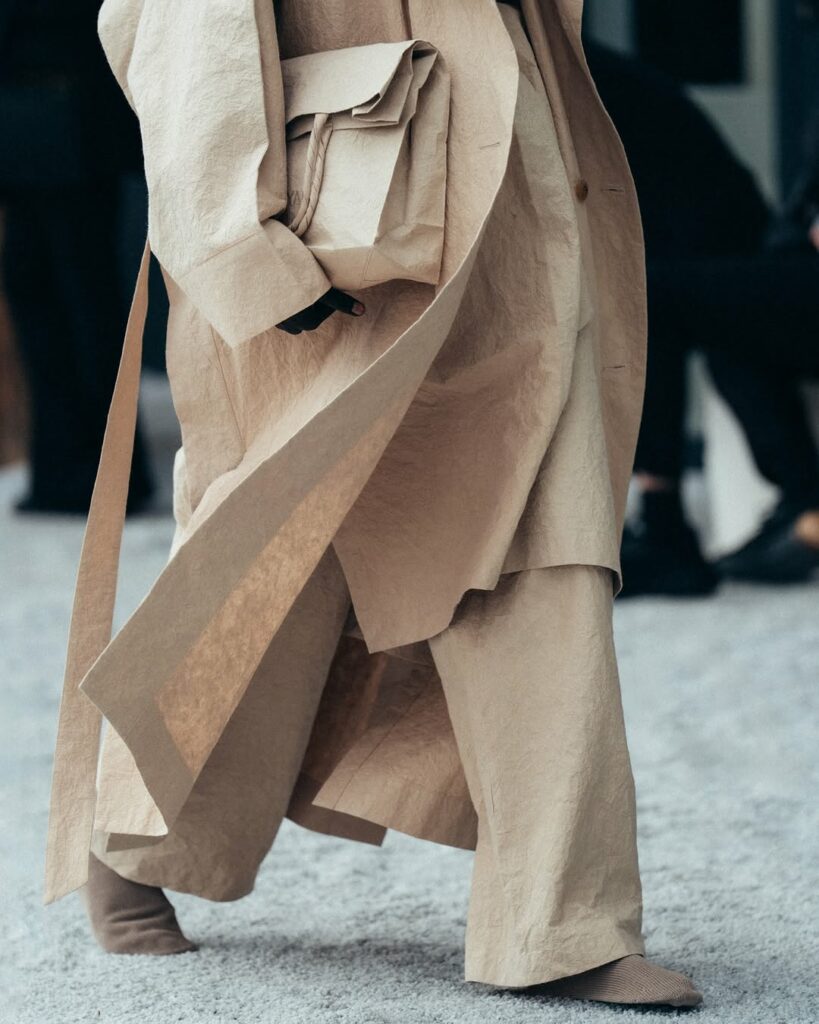
These two antithetical examples particularly caught the interest of d_archive team: one one hand a marketing-fueled stunt with questionable slogans (“Won’t last forever…who cares!”) distributed on basic, stiff, ill-fitting and uncomfortable A-shape dresses made mostly of synthetic materials with paper-like appearance; on the other hand, beautifully designed clothing made of fine and resistant hemp washi, made from the fibers of a rare, indigenous plant species called Yasu-asa (Yasu hemp).
Paper is renewable, and its incorporation into fashion reflects a commitment to practices that are relevant to the current discourse about sustainable, unconventional, or circular design. However, it needs context and understanding of its properties to not be perceived only as a disposable material.
d_archive’s first 3D replica of a paper garment is this Kamiko from the National Gallery of Victoria, Melbourne.
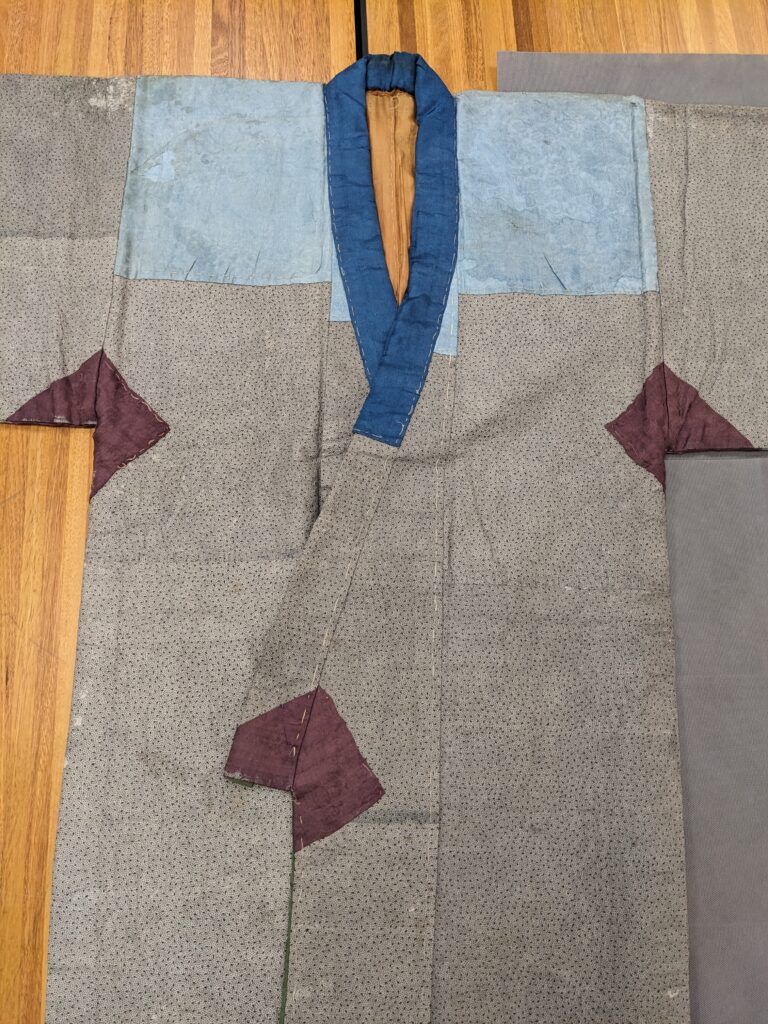
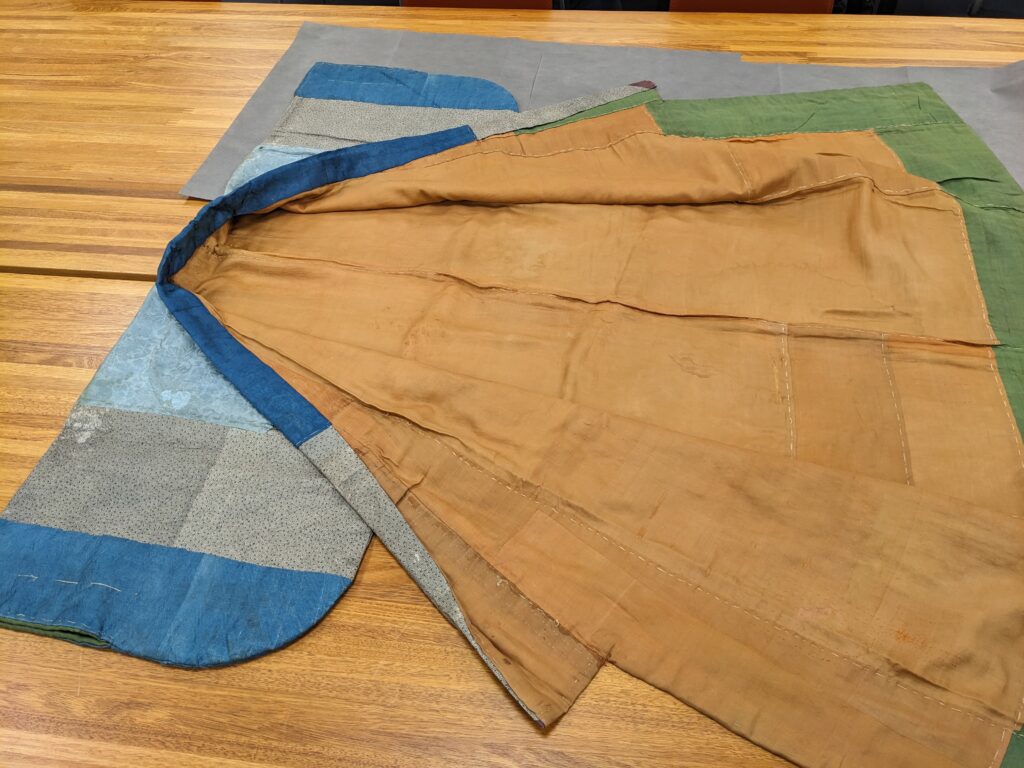
A long kimono made of fine printed washi softened with a hand-wrinkling technique called momigami, lined with bright silk and reinforced with silk jacquard patches on the outside.
We also had a chance to see the first examples of 60s paper dresses -which are technically not paper, but a mix of synthetic fibers- one from the Campbell soup company, the other ones made by the artist Harry Gordon.
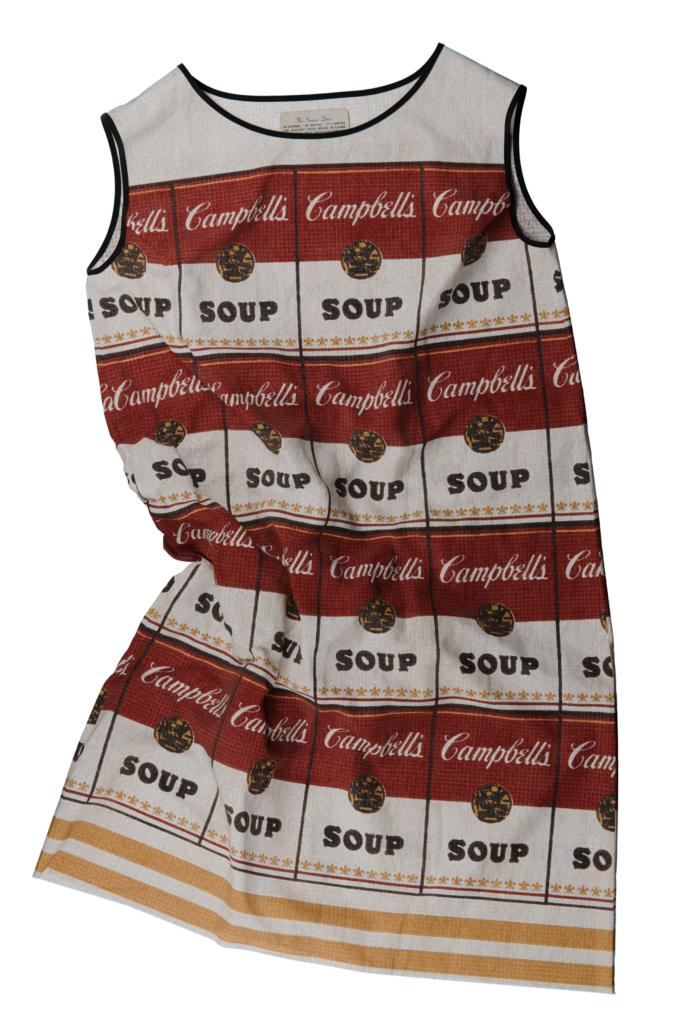
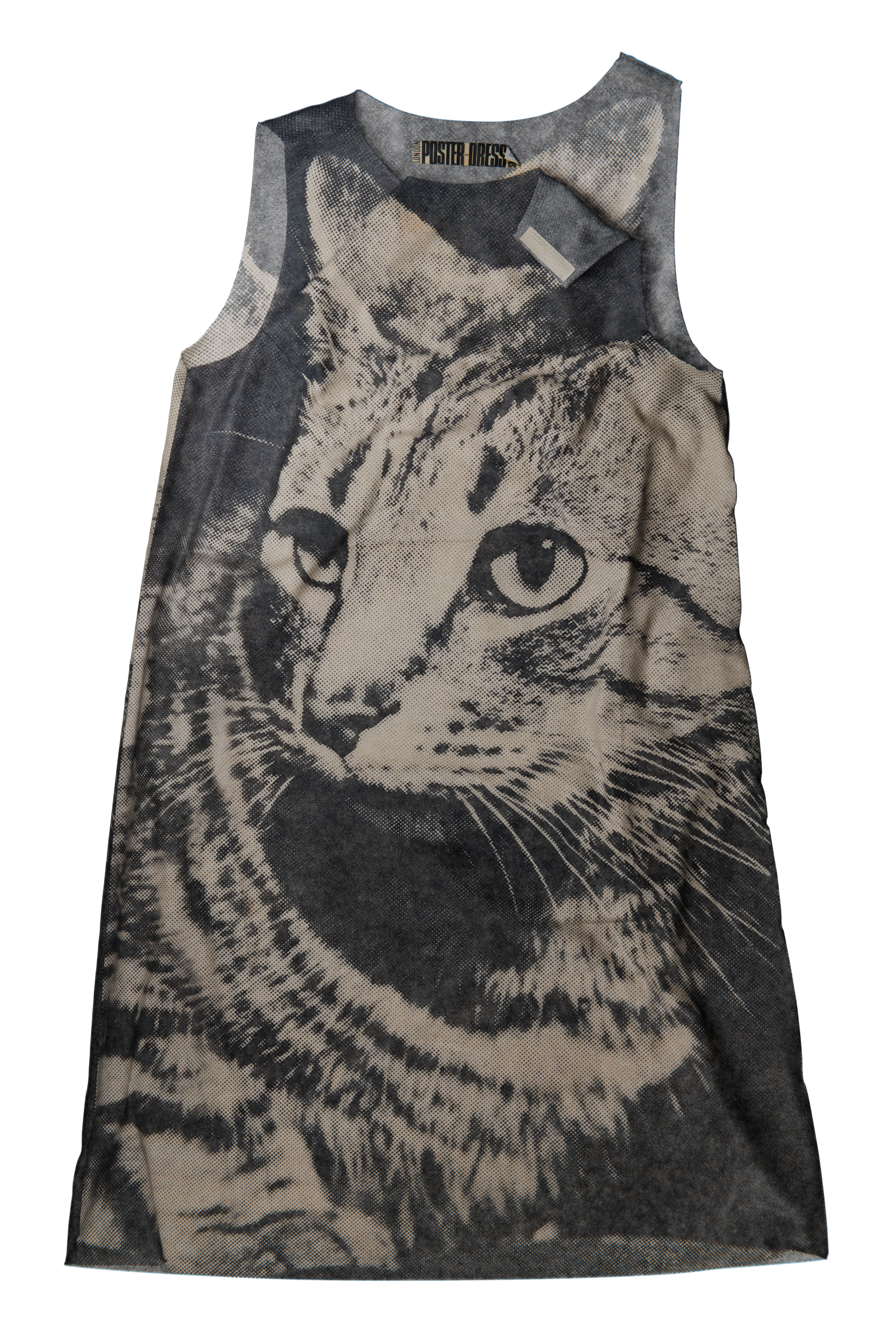
The Residency at ATOPOS
In June 2024 we flew to Athens, as Daphne invited us to join her for a collaborative residency at ATOPOS CVC.
ATOPOS CVC is a unique cultural organization based in Athens, Greece, dedicated to exploring and promoting the expression and adornment of the human body through innovative and unconventional approaches. Founded in 2003 by Stamos Fafalios and Vassilis Zidianakis, ATOPOS CVC derives its name from the ancient Greek word “άτοπος” meaning strange, eccentric, or unclassifiable—qualities that reflect the organization’s commitment to challenging traditional norms and embracing the unusual in visual culture.
The organization’s mission is deeply rooted in interdisciplinary collaboration, bringing together diverse fields such as art, architecture, fashion, and anthropology. This convergence of disciplines allows ATOPOS CVC to foster a dynamic platform where contemporary visual culture is researched, curated, and celebrated. By focusing on the body as a canvas for artistic and cultural expression, ATOPOS CVC positions itself at the intersection of historical exploration and forward-thinking innovation.
A central element of ATOPOS CVC’s work is its extensive and eclectic collection of design objects, particularly its remarkable archive of paper garments. These garments, ranging from 1960s disposable dresses to traditional Japanese kimono-style clothing and contemporary experimental designs, form the core of ATOPOS CVC’s research and curatorial practice. The collection not only serves as a resource for scholarly investigation but also as a catalyst for creative exploration, inspiring new interpretations and applications of historical materials.
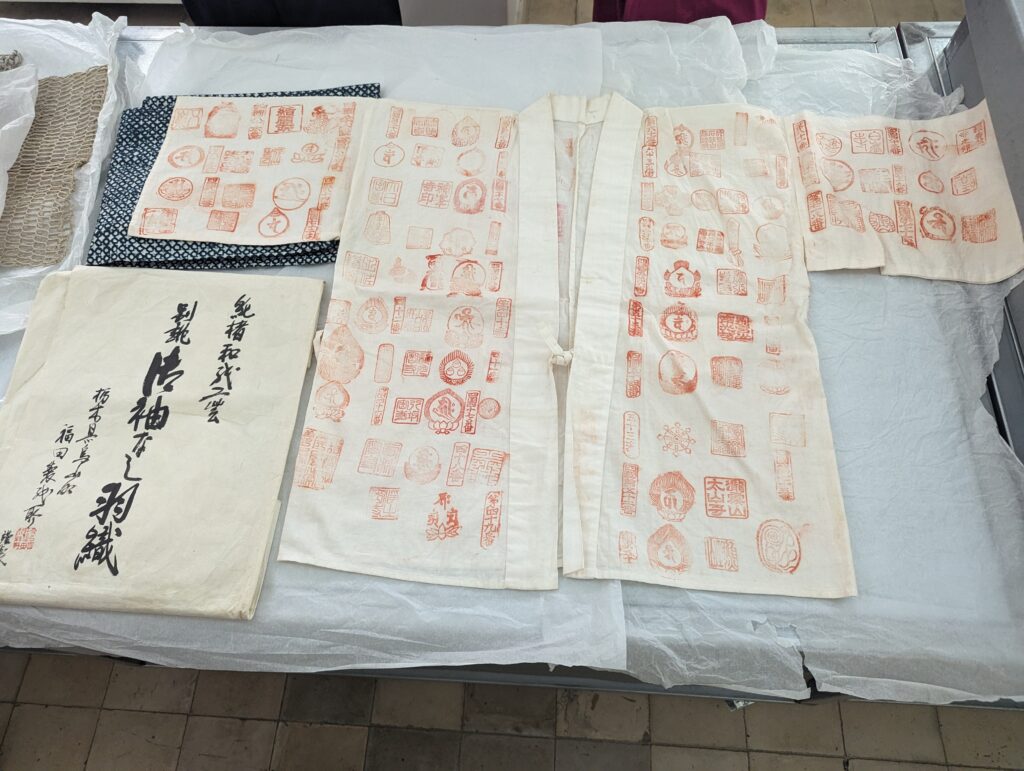
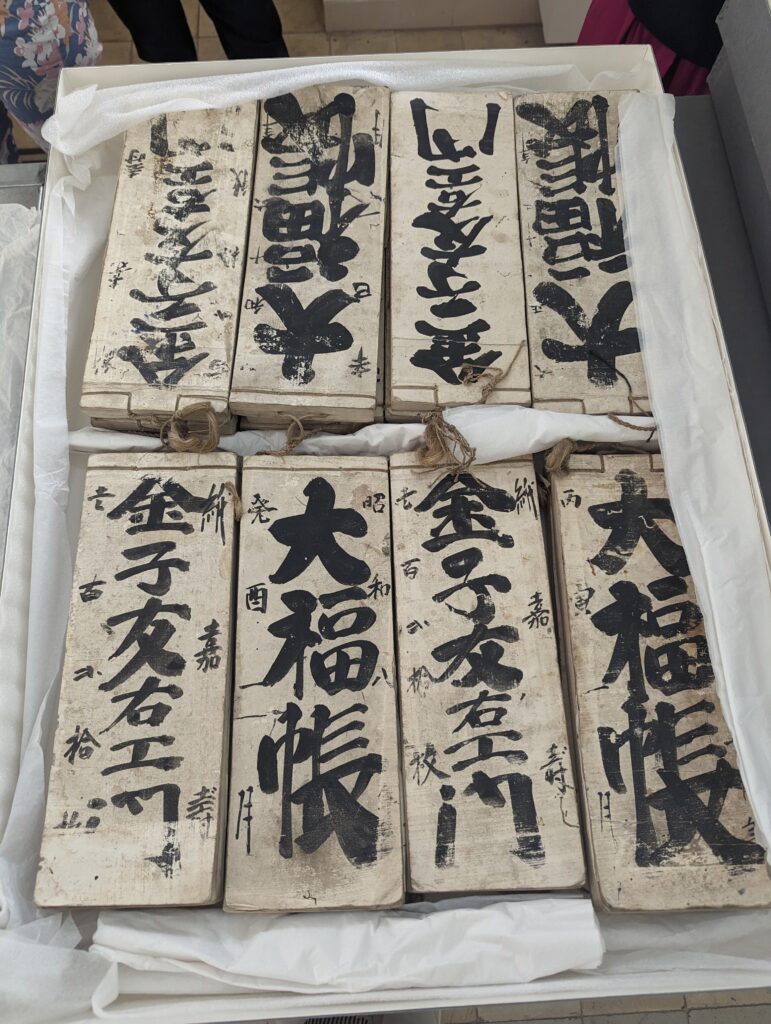
Through residencies, exhibitions, and public programs, ATOPOS CVC engages with artists, designers, and researchers from around the world, creating a space where the past and present converge. The organization’s commitment to preserving and reimagining cultural heritage, particularly through the lens of paper clothing, positions it as a vital contributor to the global dialogue on fashion, material culture, and the digital future of heritage preservation.
The ATOPOS collection was developed to stimulate research into the culture of dress and the history of design, focusing on innovative and less familiar themes. ATOPOS has a library, a curatorial practice, and a residency program to achieve this aim—it also has an archive of design objects that were the focus of this fellowship and the reason the authors conducted a residency on site. At the core of the ATOPOS collection is a suite of roughly 400 1960s-era disposable paper dresses, produced during a ‘fad’ for disposability at the height of the optimism of the space age. In addition to these pieces, the collection houses paper clothing artifacts that stretch back into history, and some more recent from contemporary fashion designers and artists. The former includes paper kimono-style Japanese garments, and the latter includes experimental paper fashion designs from Martin Margiela, A.F. Vandevorst, Hussein Chalayan and others.
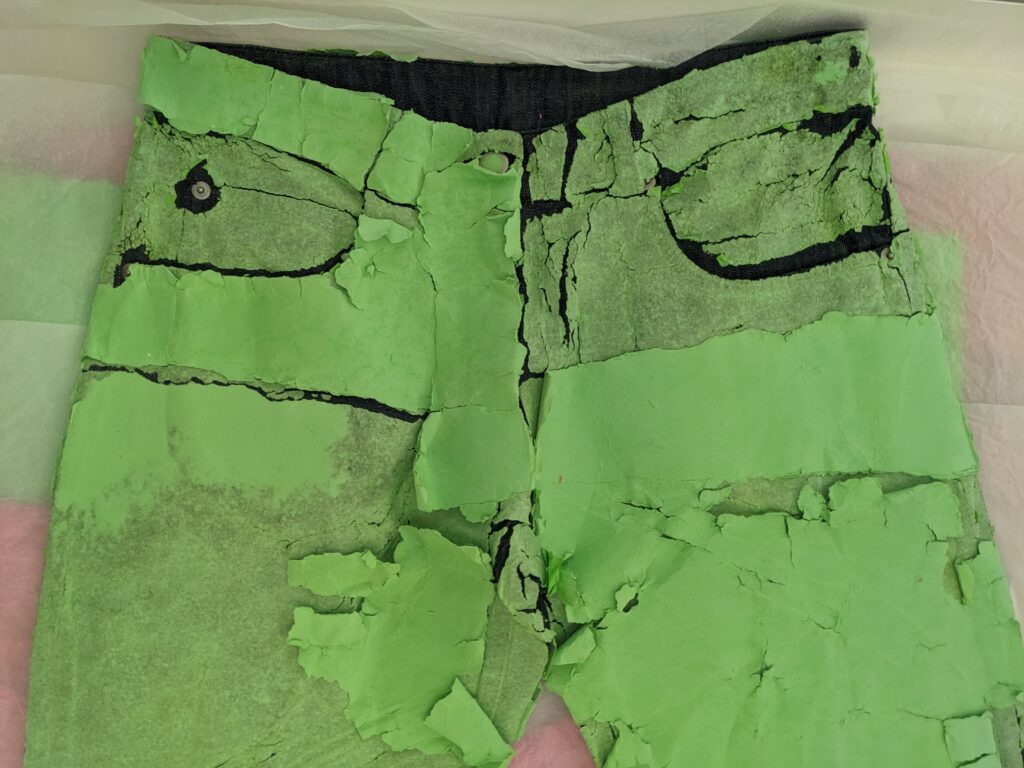
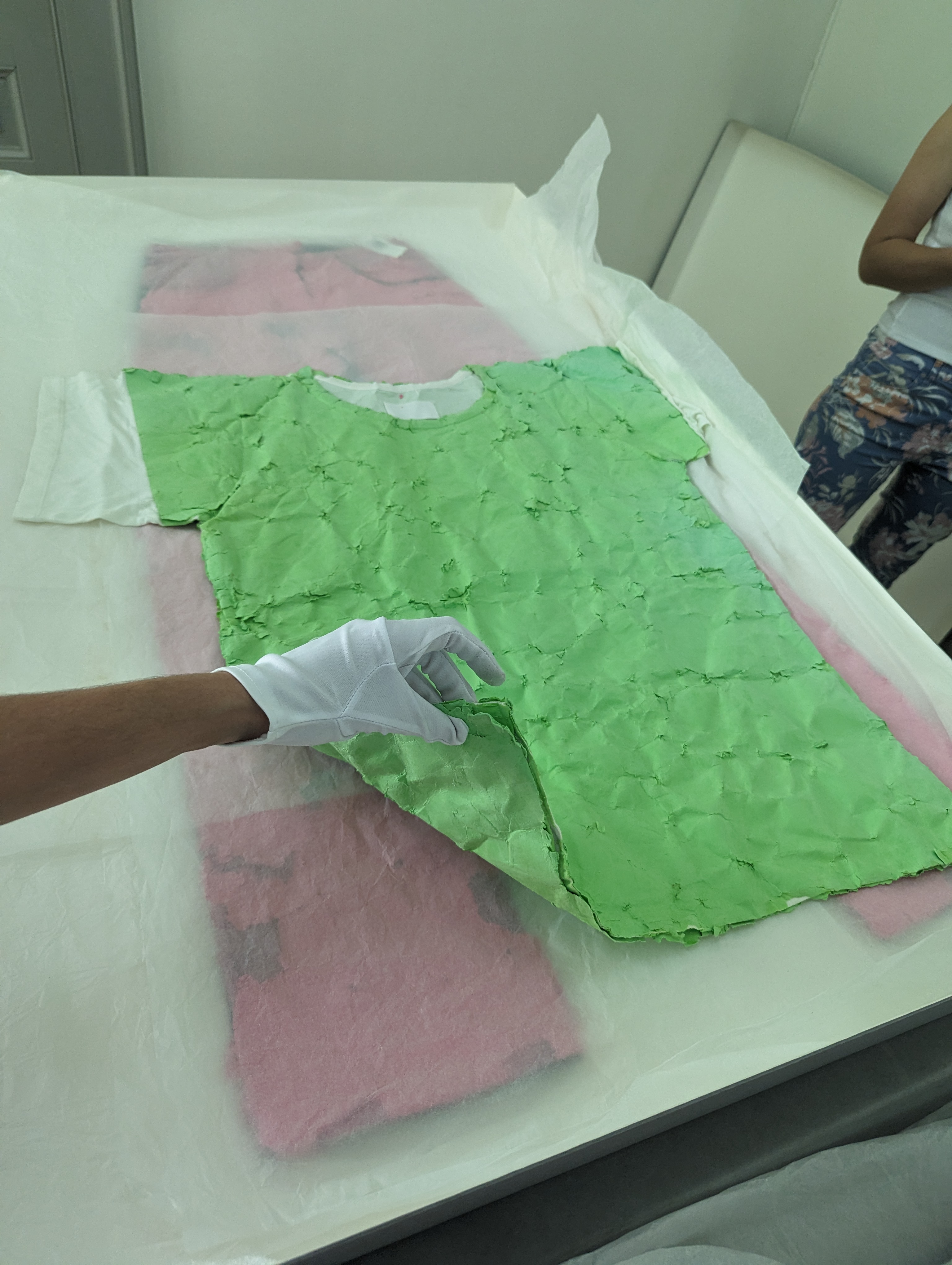
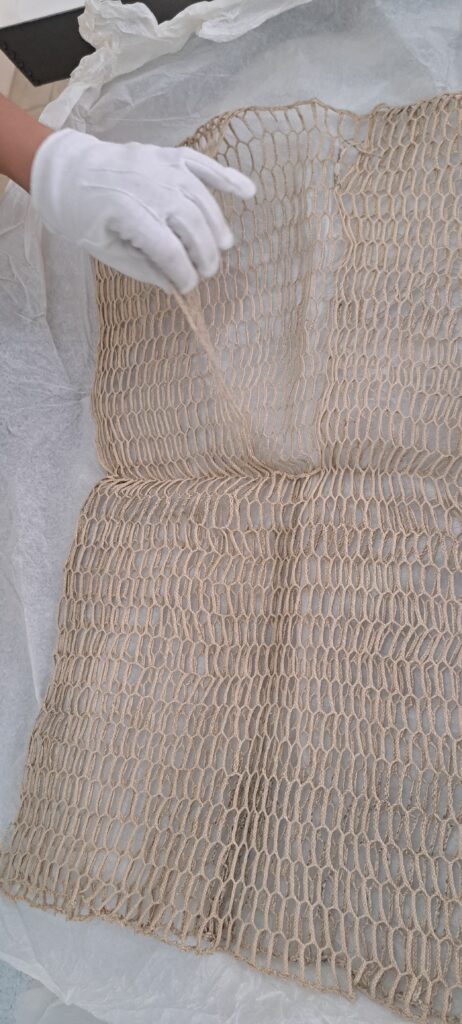
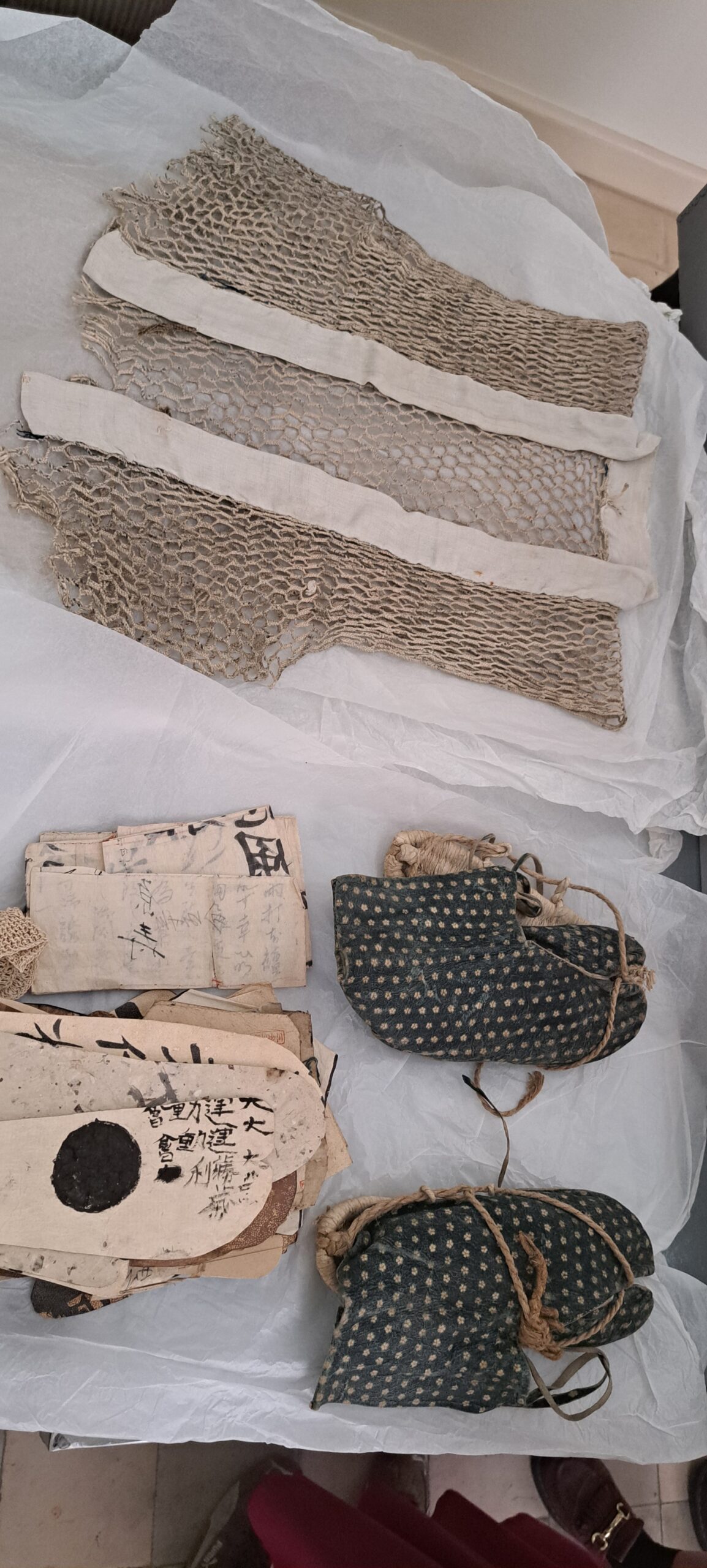
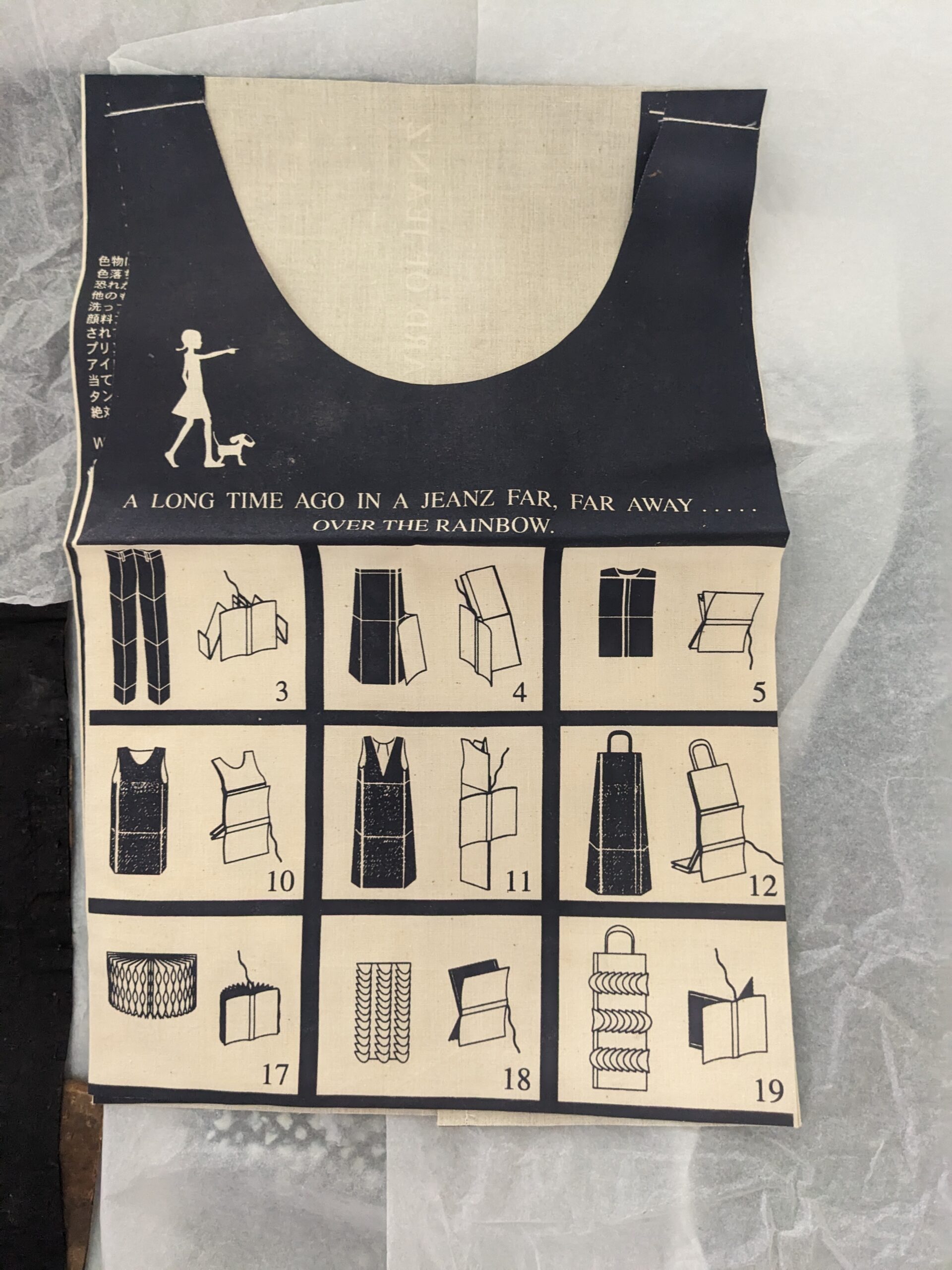
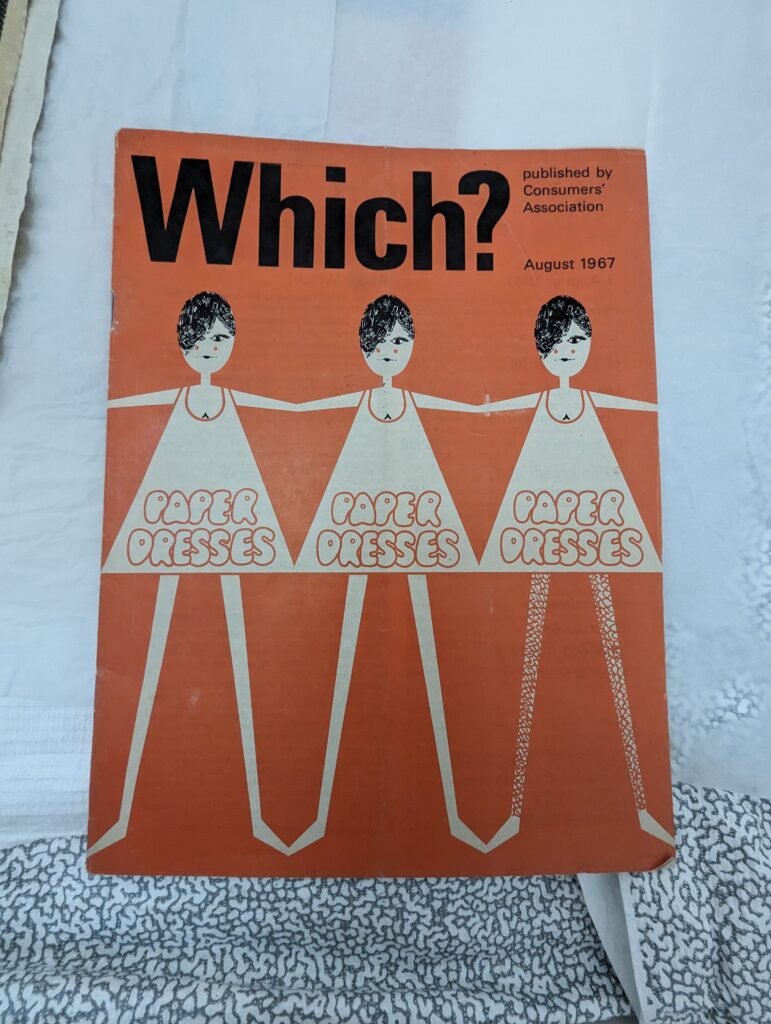
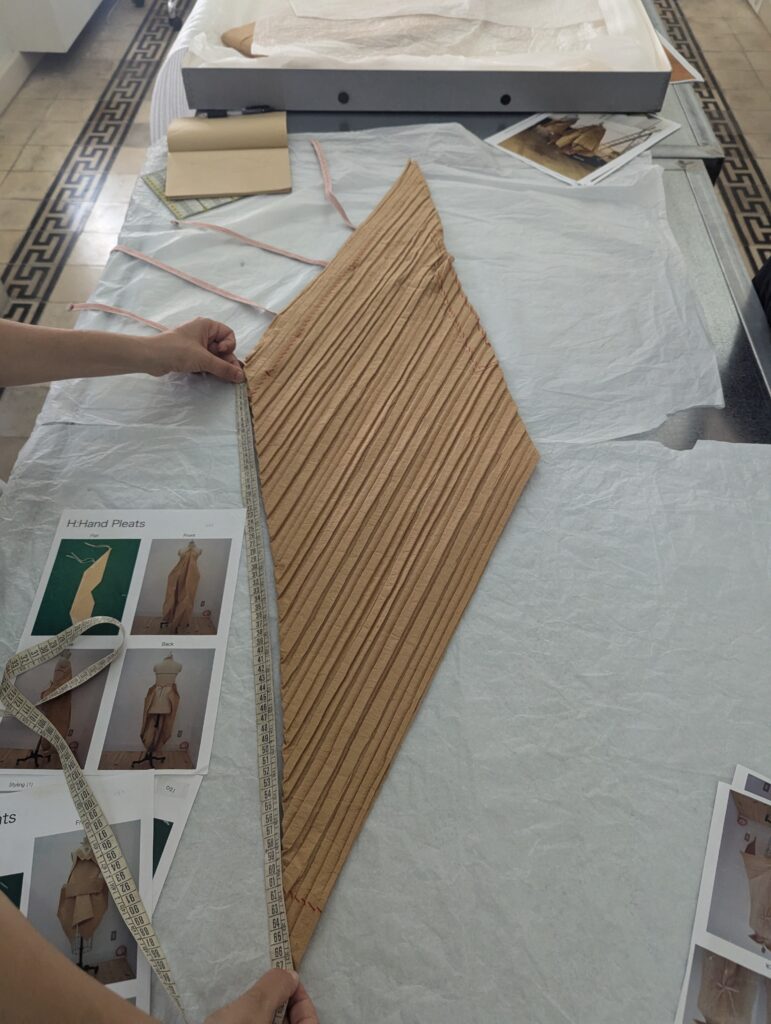
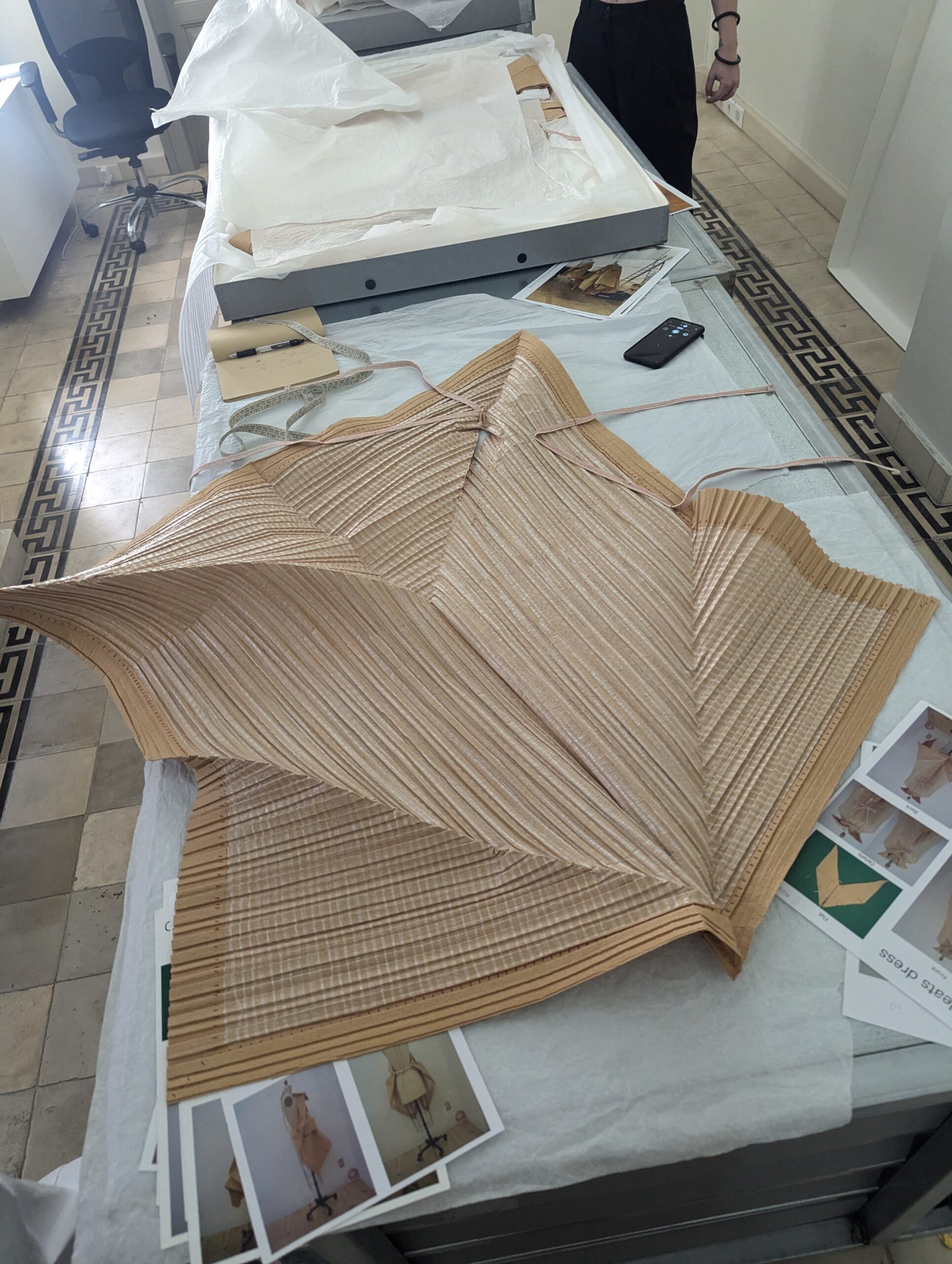
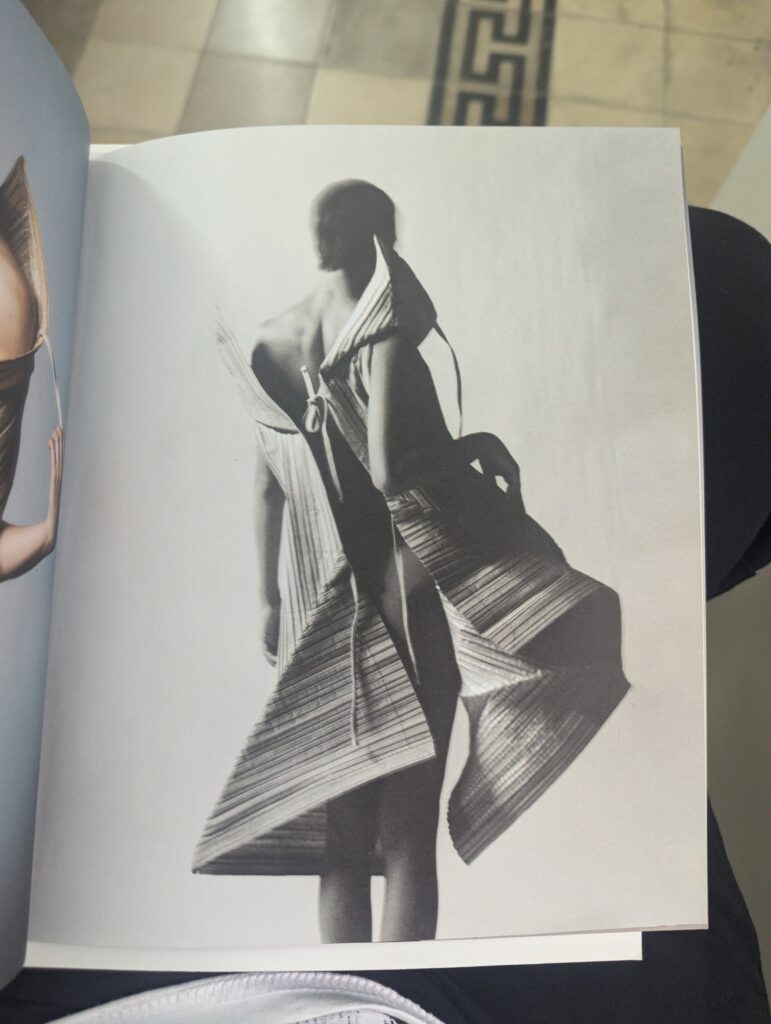
Daphne and the d_archive team spent a week living and working in the beautiful spaces at ATOPOS, located in the Kerameikos area of Athens, during which they were allowed to see, touch and study many pieces from the organization archive under the guidance and knowledge of creative director Vassilis Zadianakis, curator Myrsini Pichou and assistant curator Steffi Stouri.

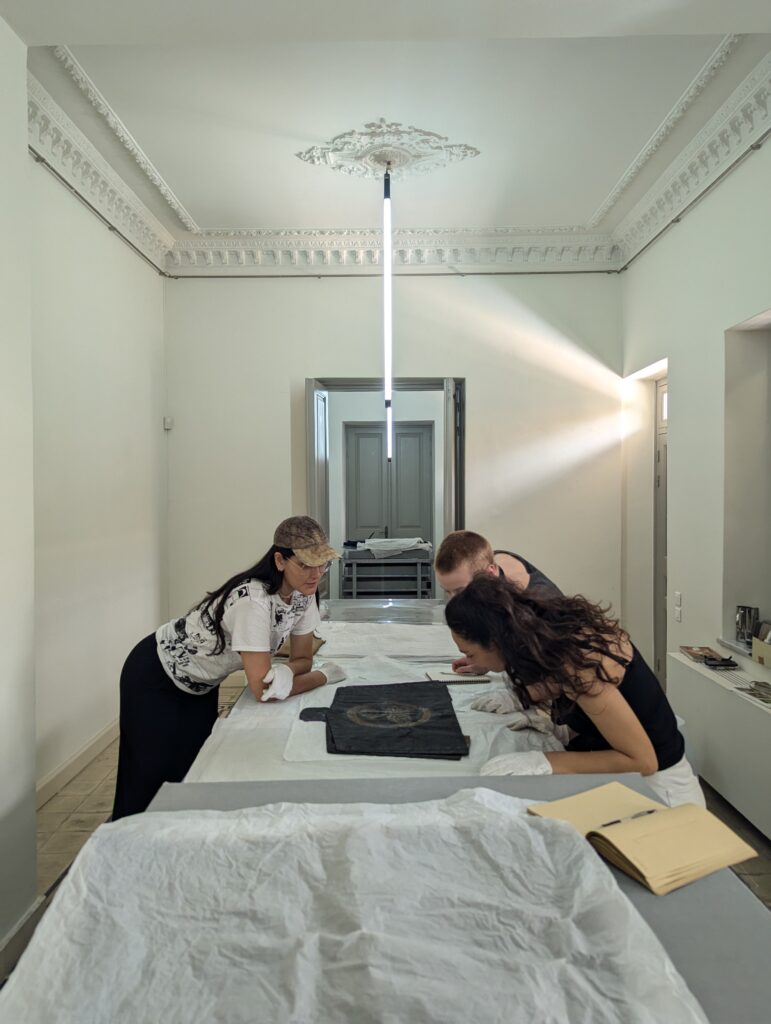
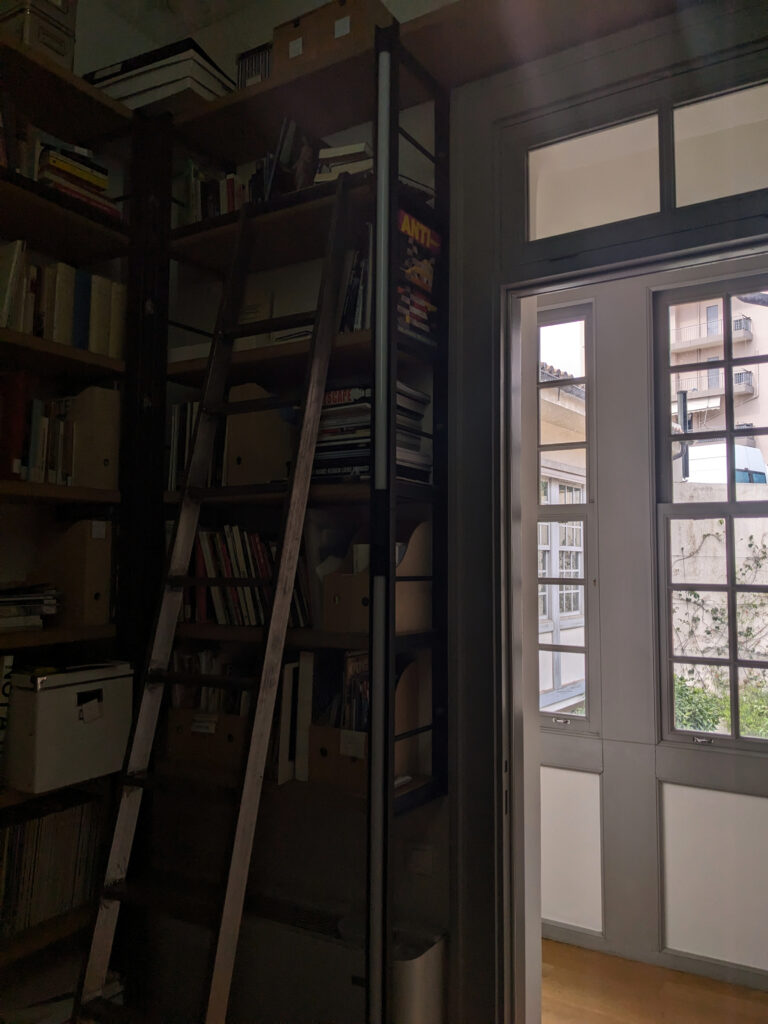
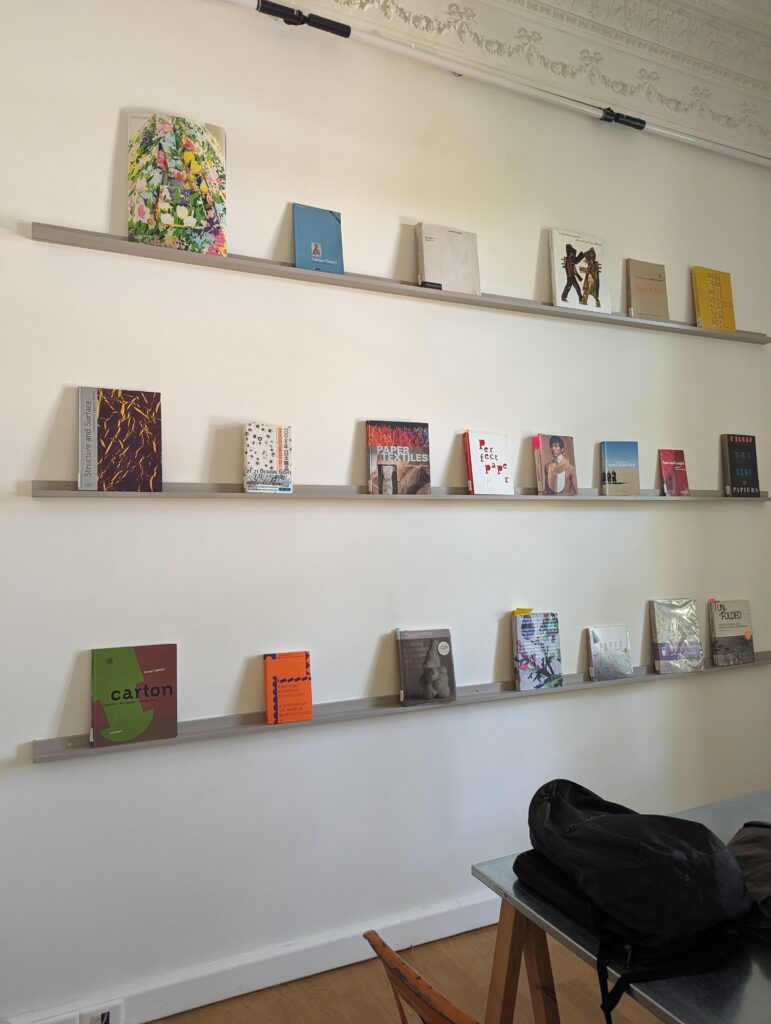
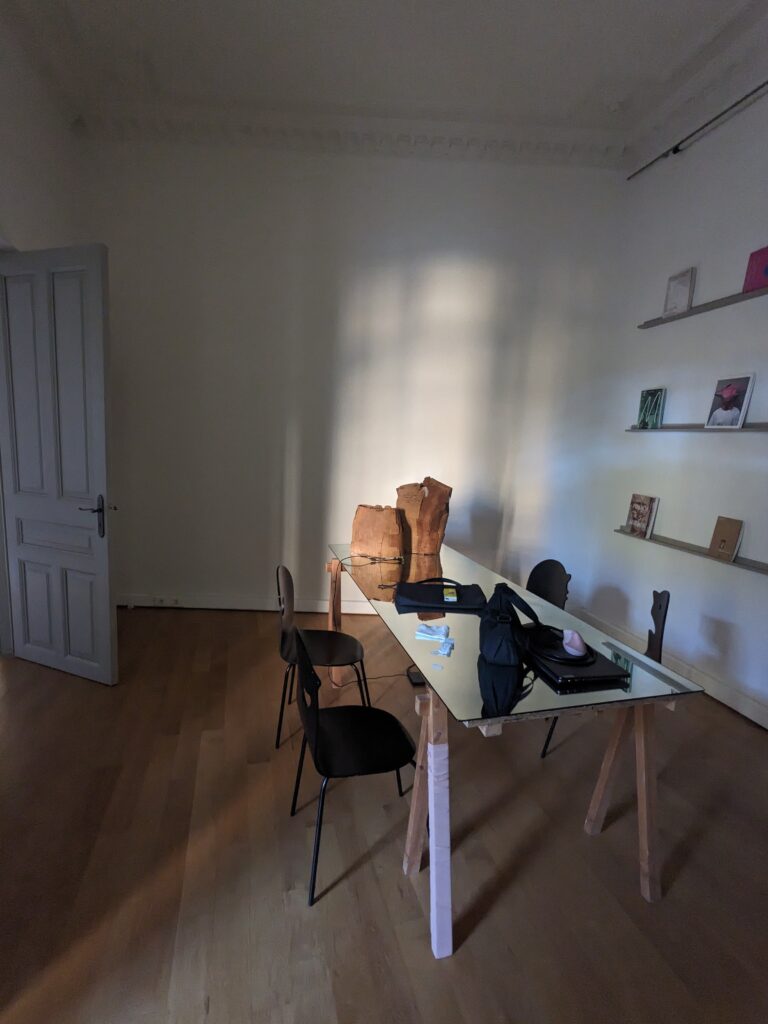
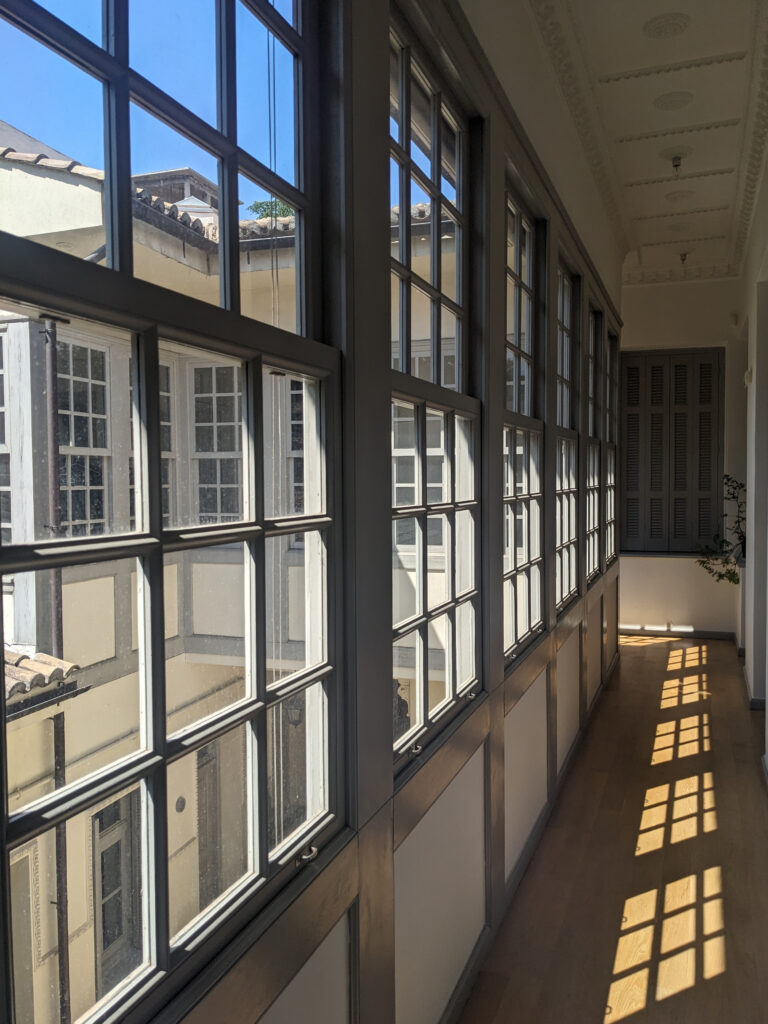
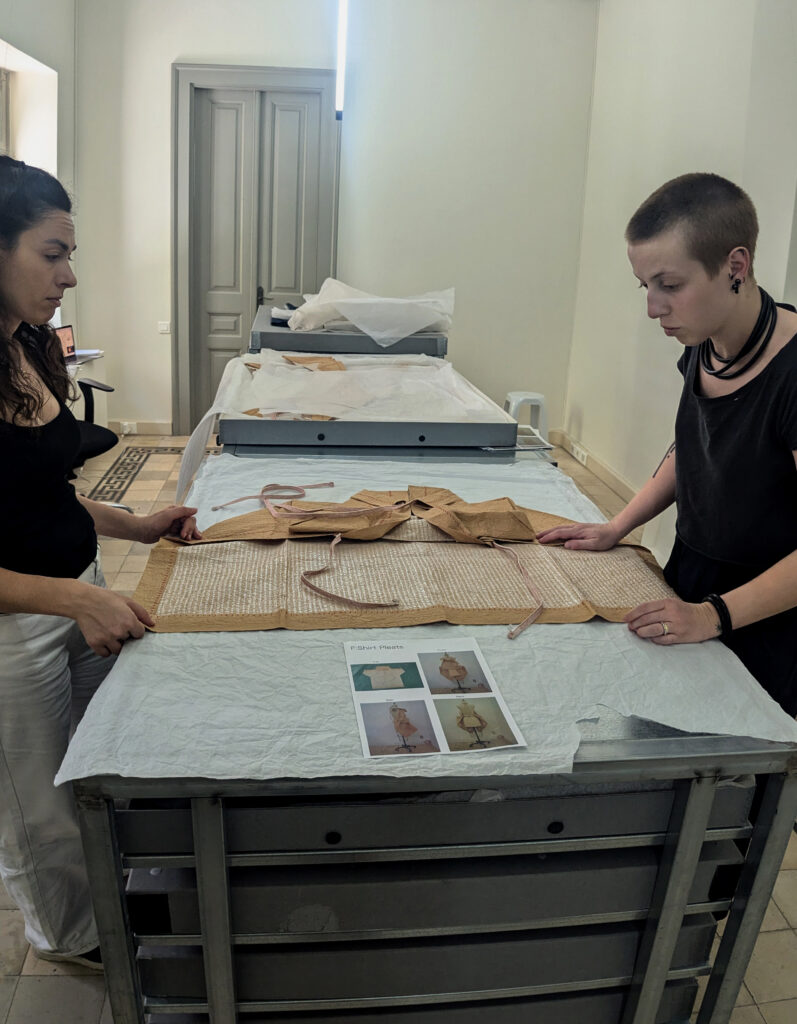
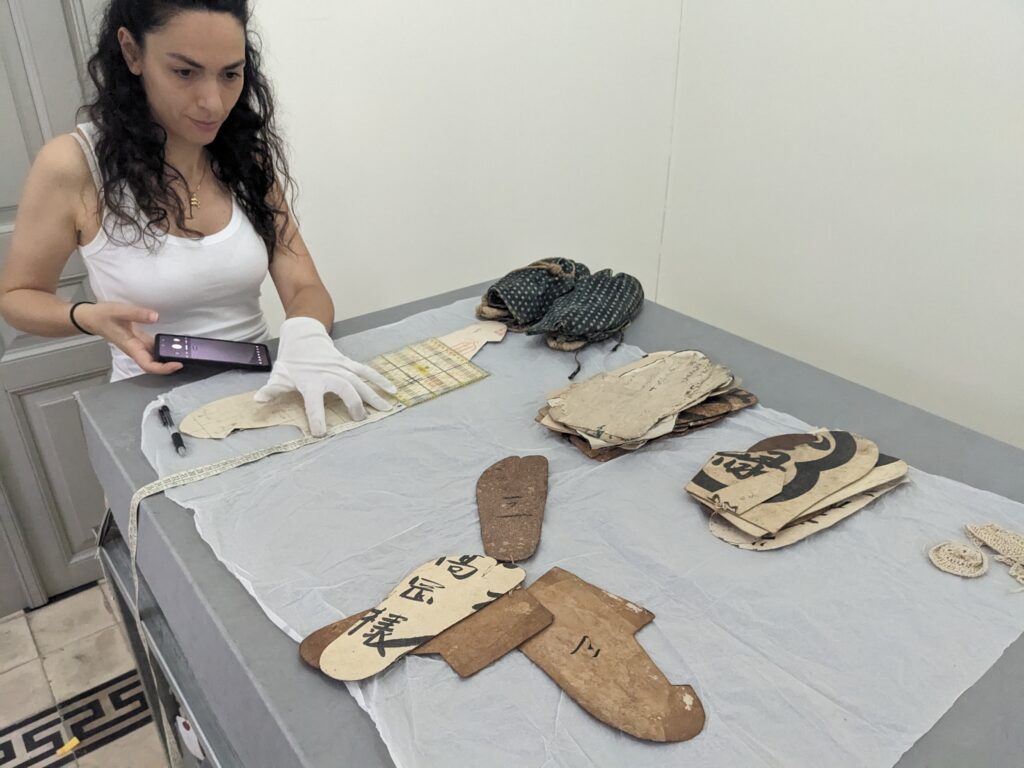
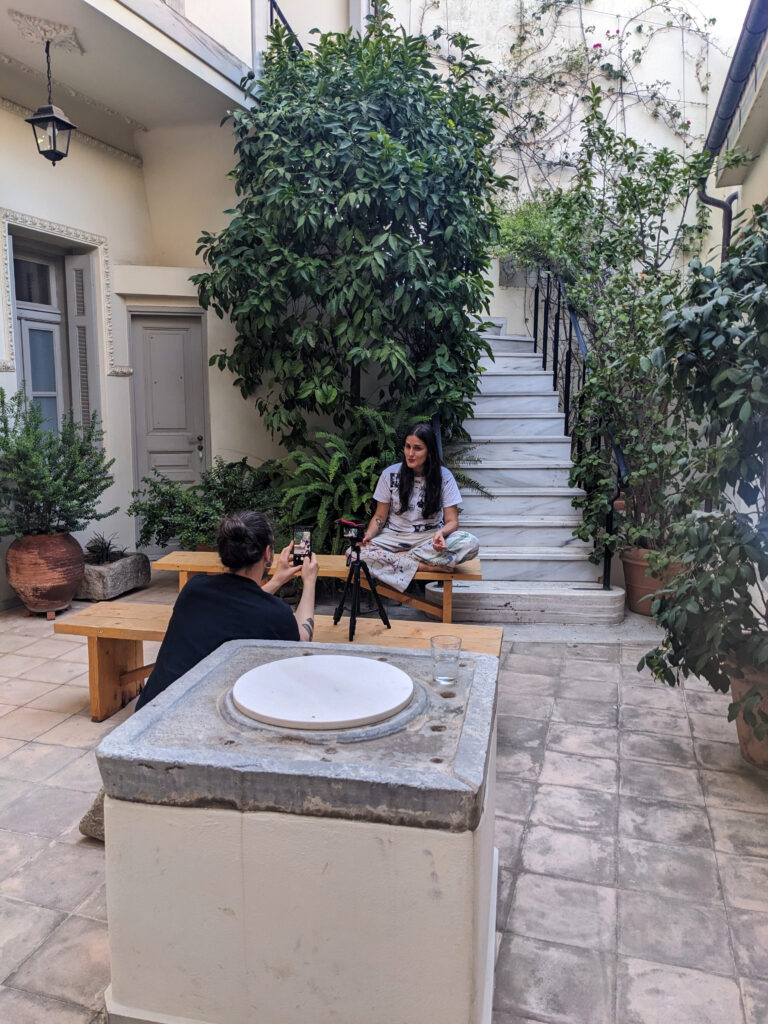
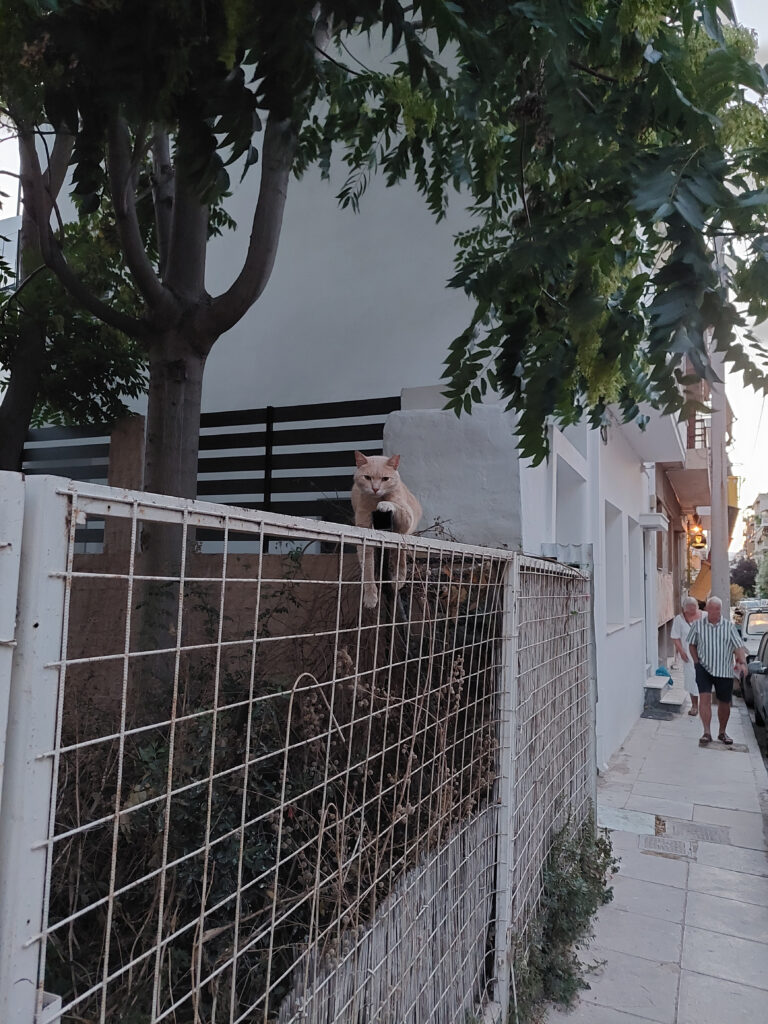
Towards the end of the residency Daphne and d_archive were also invited to conduct a public workshop to disseminate some of the findings of the fellowship and residency. This was done over the course of one day, and 15 participants were selected to participate. The workshop explored one of the paper garments digitised during the residency, a kimono underwear made entirely of recycled ledger paper and the above-mentioned kamiko from the collection of the NGV in Melbourne, Australia. We invited participants to learn about the garment and the research process we are undertaking by trying to reverse-engineer the pieces themselves using cheap upcycled paper. This process allowed participants to understand what a replica means (how accurate it should be), the material limitations and possibilities of paper (by examining the physical artifact and manipulating the digital object) and understand the research methods employed by the Daphne and d_archive. The participants were split into two groups, one working from the digital rendering of the NGV archival piece, and one observing the physical garment in the ATOPOS collection. The response was energetic and positive.
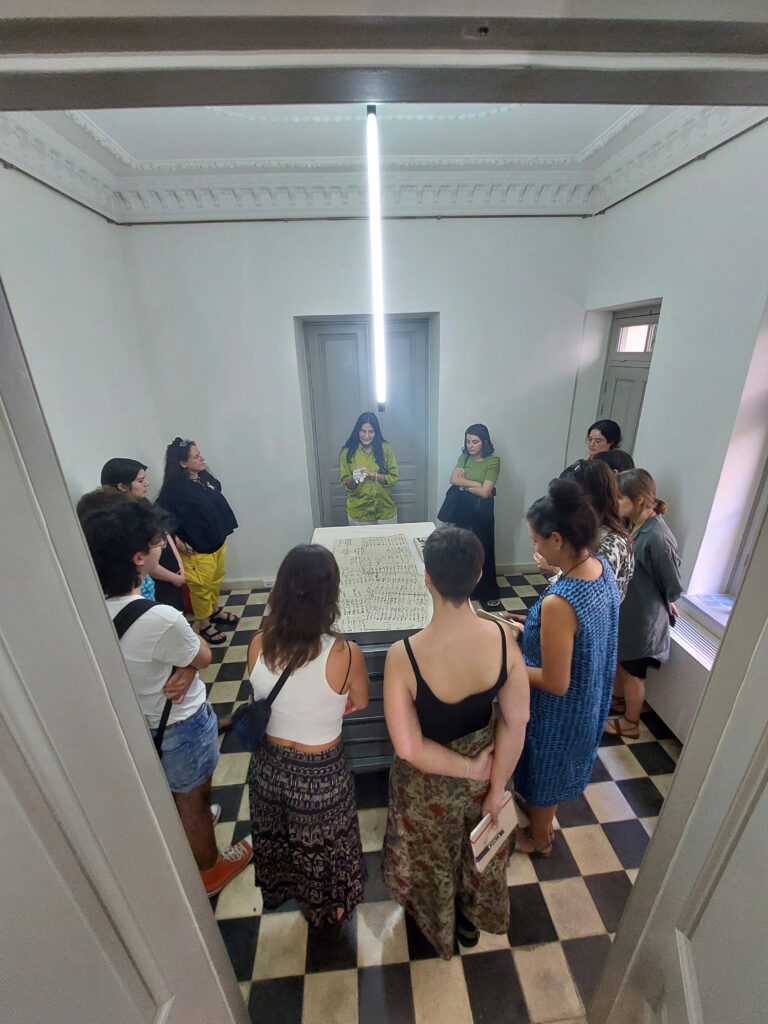
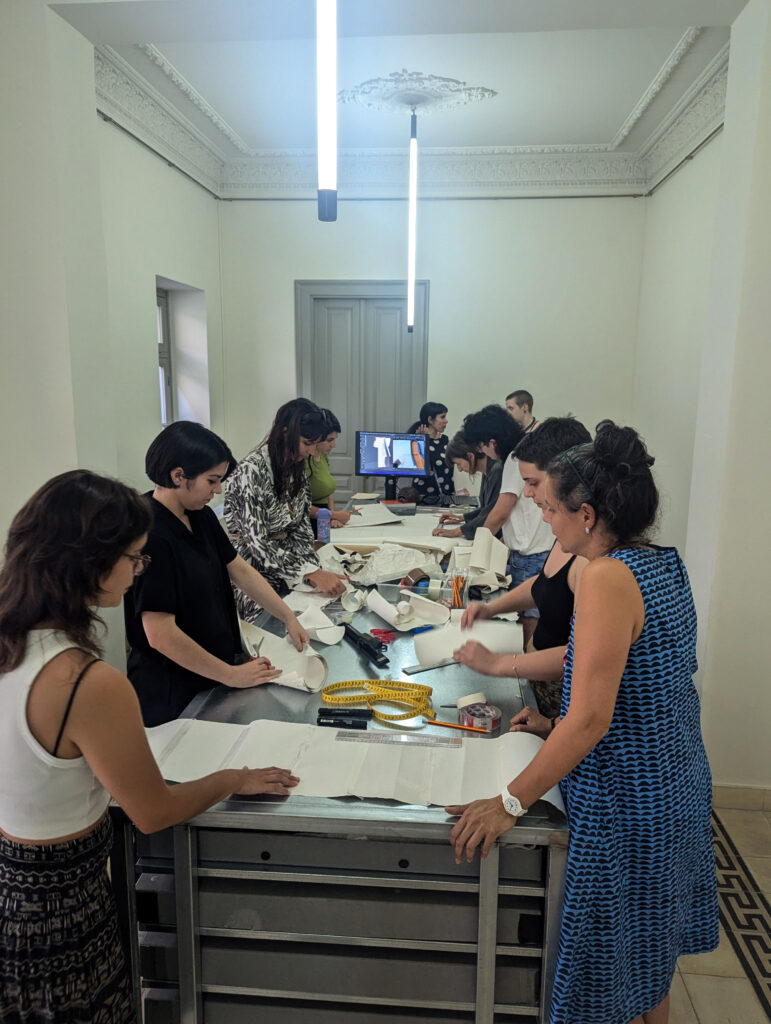
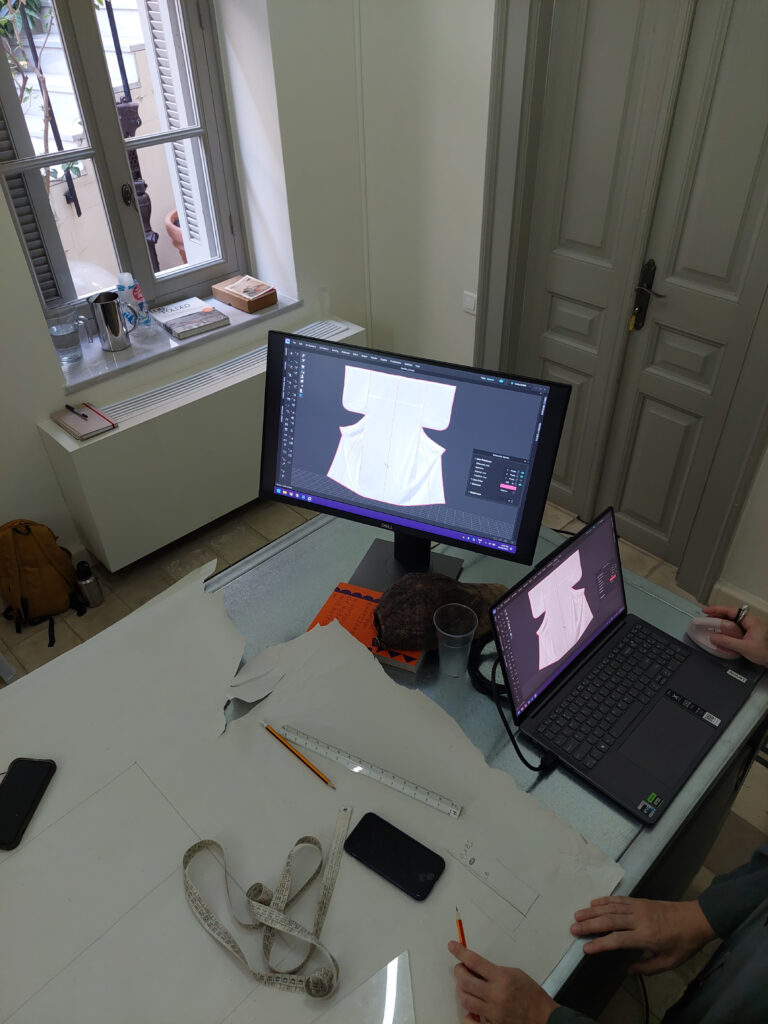
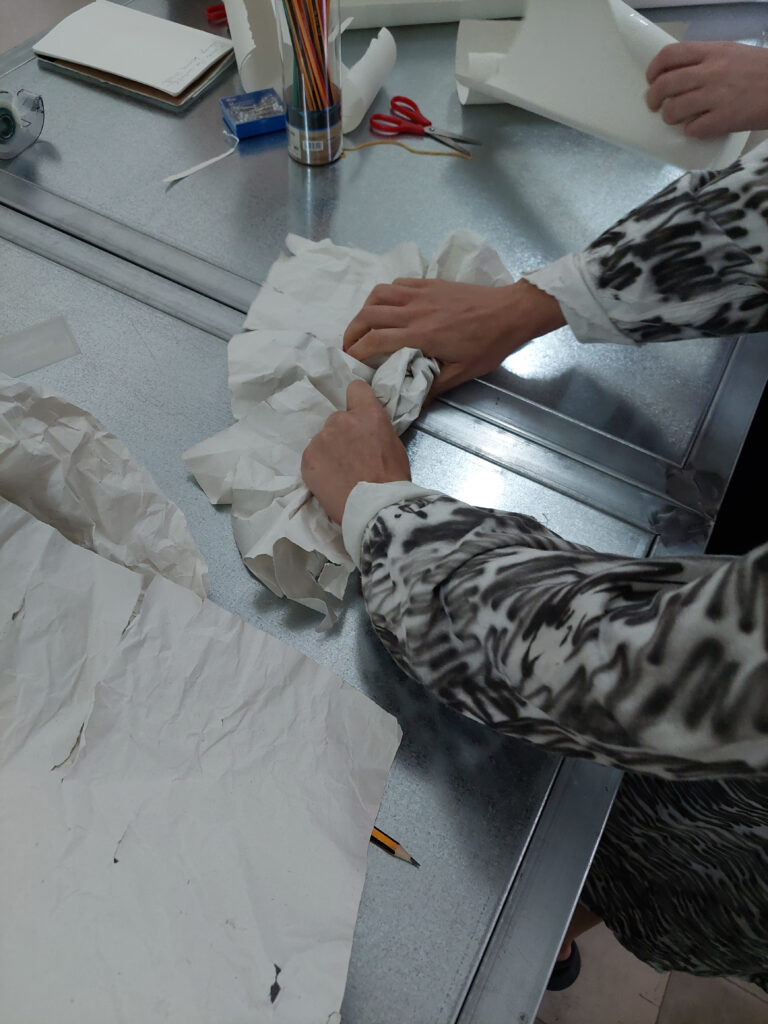
Outcomes
In the weeks following the residency, Daphne synthesised her observations and research by writing each item description, bringing historical, material, contextual and technical knowledge to the pieces. The d_archive team focused on reverse-engineering the cutting patterns and creating 3D replicas of the items, making them publicly available on this platform.
Here a list with links of the digitised pieces:
This experience and its outcomes were presented on November 13th in Madrid, during the “Tech&Craft 2024”, organised by the Madrid Polytechnic at the Museo del Traje.

By creating and sharing new knowledge and material about paper clothing pieces in the ATOPOS collection we hope to shed new light on the potentiality of this fantastic material, fostering new design ideas and keep the much needed discussion about sustainability in fashion alive and purposeful.
Thanks to
→ Daphne Mohajer va Pesaran – of course! – for bringing us into this incredible deep dive into her passion and expertise around paper garments. ♥
And also thanks for allowing us to use in this article some parts of text from her ISS Institute Fellowship report, that you can find at this link.
→ the ATOPOS team, Vassilis Zadianakis, Myrsini Pichou and Steffi Stouri, for patiently and enthusiastically allowing us to open every box in the archive, every book in the library and sharing their knowledge with us. And also for revealing to us their favourite gelato and food spots!
→ all the creatives that participated in the workshop, for spending a whole day with us talking and thinking about paper garments.
→ Victoria Vasquez Pecile, for inviting us to ramble about all of this on a conference stage in front of an audience.
Links
Daphne Mohajer va Pesaran website
You can find an interview we did with Daphne in June 2024 on our youtube channel.

